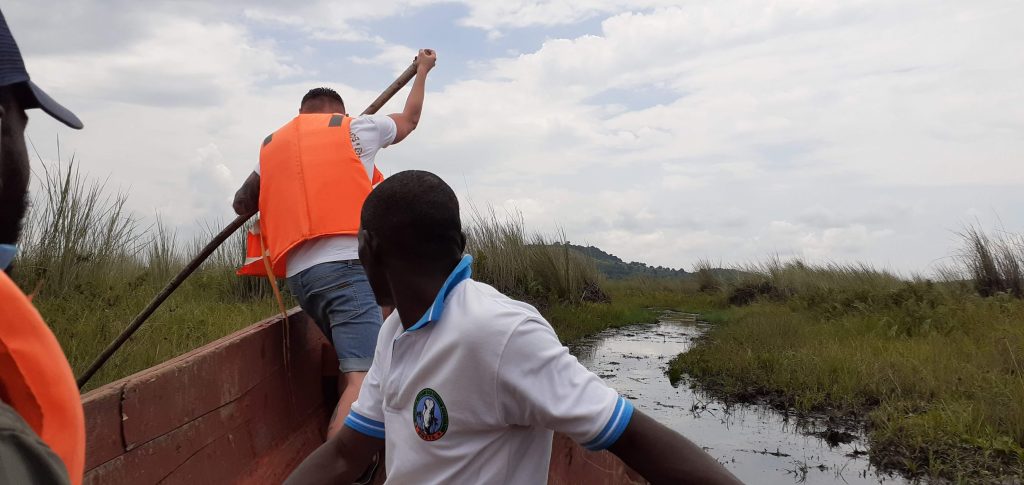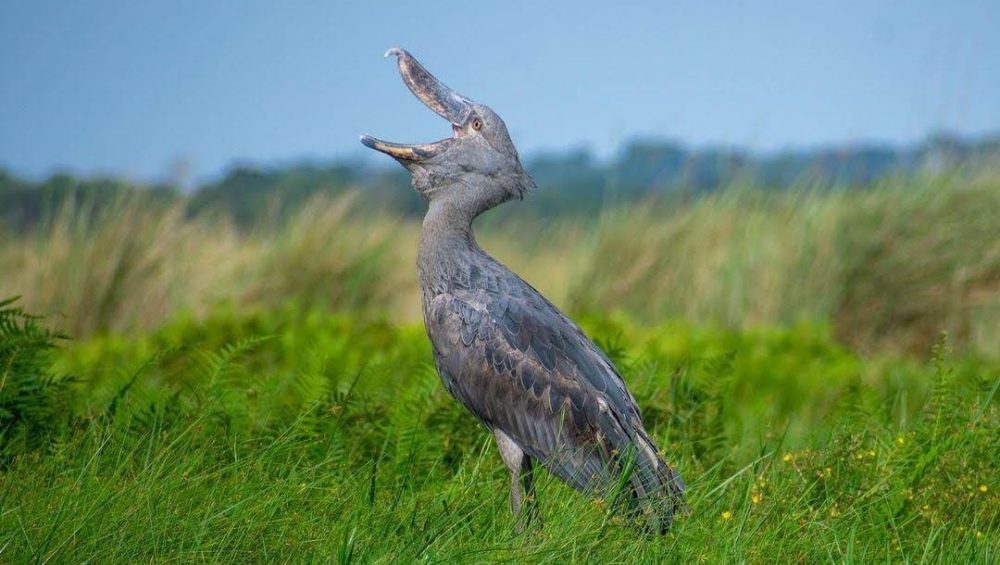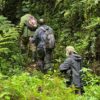The shoebills (Balaeniceps rex) are large stork-like birds. Once classified as storks, now shoebills are in a family on their own. They don’t share the same traits as storks or herons. They don’t have the long necks and legs of wading birds and are close to maybe Pelicans.
The shoebills are unique, with foot-long bills that resemble the Dutch Clogs and this is what makes them named that. Their bill is 5 inches wide and has a sharp hook at the end that allows them to grab large prey like lungfish, snakes, eels, and tilapia. They can even feed on baby Nile monitor lizards and crocodiles.
They don’t seem like birds that could be ambush predators. These are tall birds perching to about 5 feet tall, with an 8-foot wing span, yellow eyes, gray feathers, white breast and a small crest on the back of the head, and long legs, that make them ideal to walk on the vegetation in the marshes and swamps. They are in habit East Africa, Zambia, Ethiopia, and South Sudan.
The shoebills can be motionless for hours as they target fish that come above not noticing that this prehistoric bird is looming. They collapse their prey after hunting. They are silent birds, calm though sometimes they clatter their bills when greeting or nesting. They vibrate the throat muscles to dissipate heat and chicks make hiccup sounds.
Shoebills reach maturity at 3 to 4 years and pairs that are breeding are monogamous. They are solitary birds and built their nests on water or floating vegetation. At the end of a rainy season, females lay an average of 2 eggs and both birds (male and female) tend to the eggs (incubating and turning them). The eggs hatch in about a month only one chick typically survives.
This is why these birds are a few. The International Union for Conservation of Nature (IUCN) estimates between 3300 to 5300 adult shoebills to be left.

Where to see Shoebills in Uganda
Mabamba Swamp
A bird lovers’ destination- Mabamba swamp on the edge of Lake Victoria. It is 57km from Kampala city and about an hour from Entebbe. The RAMSAR site is Uganda’s top destination for someone who needs to see the shoebill. It is an extension that stretches through a narrow and long bay fringed with papyrus. It supports about 190,000 birds and is over 260 species. It is RAMSAR site number 1638.

Lutembe wetland
On the mouth of Lake Victoria, Murchison Bay is a shallow wetland that is cut off from the body of the lake by a papyrus Island. It supports species like the cichlid fish, and butterflies, 22% of the Black Winged terns population, and is also home to the Shoebill. It is a RAMSAR site and number 1637. The records of the shoebill here are not as at Mabamba, they are occasional, so it’s not as a top hotspot for the shoebill as Mabamba.
Murchison Falls National Park
The park is Uganda’s largest and has about 475 species of birds that include a sighting of an Egyptian Plover and the Shoebills inclusive. Boat trips to the Delta Point where the Nile River feeds into the Lake Albert, the marshes here were productive for those seeking to see the shoebill. The raise in water levels made these trips downstream less productive after the marshes were covered. But still, you can see these birds here.
Ziwa Rhino Sanctuary
The sanctuary is a less-known area for shoebills yet it is productive. It is famous for rhinos and a great stop for en-route travel to Murchison Falls National Park. For bird watchers and those that get close to the Lugogo swamp, the shoebill is the anticipated thing to see here. There are recorded 11 individuals/shoebills here. A canoe trip through the Lugogo Swamp is the biggest opportunity to see the shoebill at the sanctuary.
Tooro Semliki Game Reserve
The reserve might not be a top wildlife viewing destination but it is a bird watchers’ paradise. It is near Lake Albert with more than 460 species of birds that include a shoebill. Boat trips on the lake are ideal for the search for this prehistoric bird.
Makanaga Swamp
This is part of the larger Mabamba Swamp System. It is about a 60km drive from Entebbe via the Kampala-Masaka Road. The turn to the swamp is at Kamengo Trading Centre. It is also a good place to spot the shoebill though less developed and famous like the Mabamba swamp.
In Rwanda, a boat trip on Lake Ihema at Akagera National Park is an opportunity to see the shoebill in the land of 1000 Hills.




